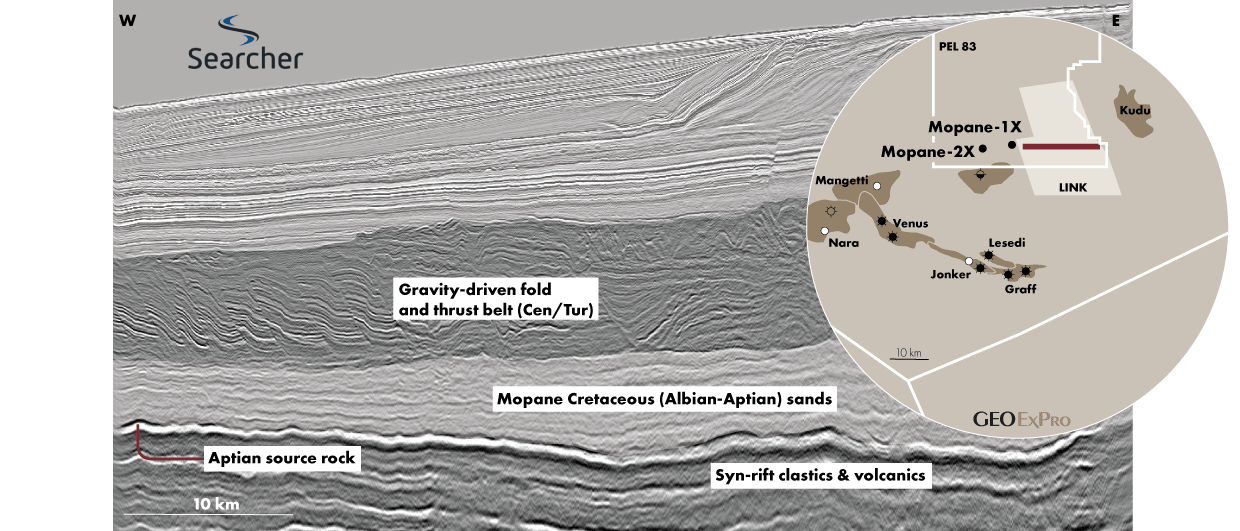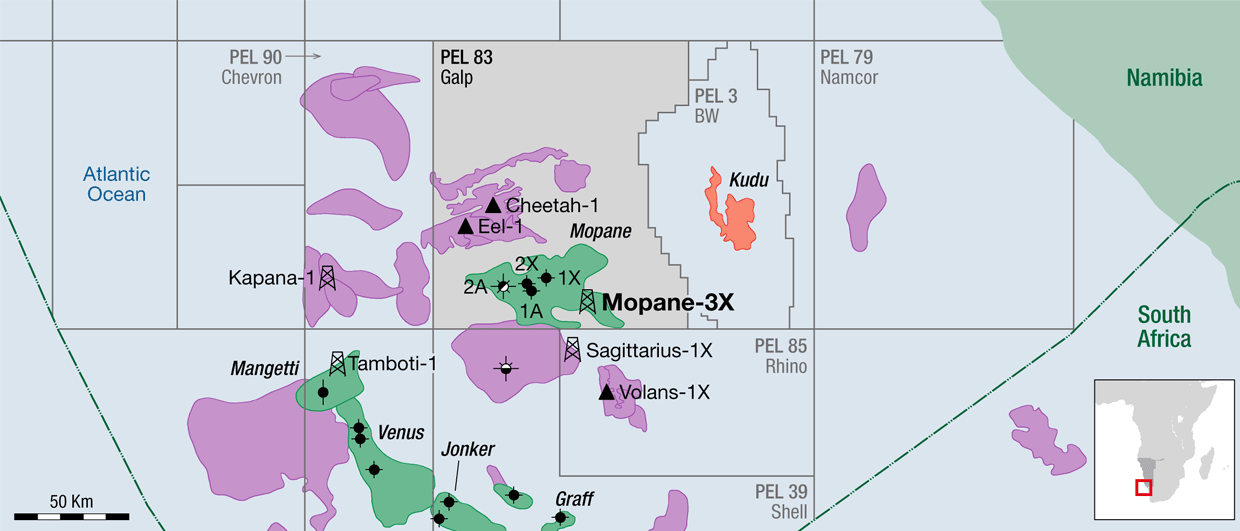For obvious reasons, there has been a lot of media coverage today on the test results of the Mopane-1X well in Namibian waters. The well flowed at 14 kboepd at maximum capacity, which has subsequently contributed to the consortium of companies – Galp, operator at 80%, and NAMCOR and Custos at 10% each – to announce that the Mopane complex could hold 10 billion barrels of oil equivalent or higher.
An interesting observation is that Mopane is thought to host hydrocarbons in both Venus and Graff types of reservoirs, as Peter Elliott from NVentures wrote in a recent GEO EXPRO article. He wrote: “The Mopane complex (ed.) appears to hold both the Late Cretaceous Cenomanian – Turonian (CT) play seen at Graff, and the Lower Cretaceous Albian-Aptian play seen at Venus. A major detachment at Cenomanian level appears to underlie high-energy clastics, forming combination stratigraphic/structural traps in the Cenomanian/Turonian. Further large build-ups at the base Cretaceous show strong similarities to the basin floor fan play in the Albian. Galp announced major light oil columns at two depths, suggesting perhaps both plays are active.”
The seismic section shown here was kindly provided by Searcher today. It shows both the Cenomanian and Turonian gravity-driven fold and thrust belt as well as the underlying Aptian-Albian more parallel-layered strata. It is in both these intervals that the wells have supposedly found hydrocarbon-bearing reservoirs, and going by the names of the reservoirs used by the consortium (AVO-1-3), AVO anomalies likely formed the leading factors in drilling these wells. The source rock of the discovery is probably the Aptian interval as noted in the seismic.
Neil Hodgson mentioned that Galp describes the Aptian/Albian succession above the source rock as a “complex of channels”. Is that a reference to the local delicacy named Mopane? Mopanes are big and fat worms that are said to be full of meat, so using this name for this new discovery is quite fitting as it seems to be quite full of meat!





